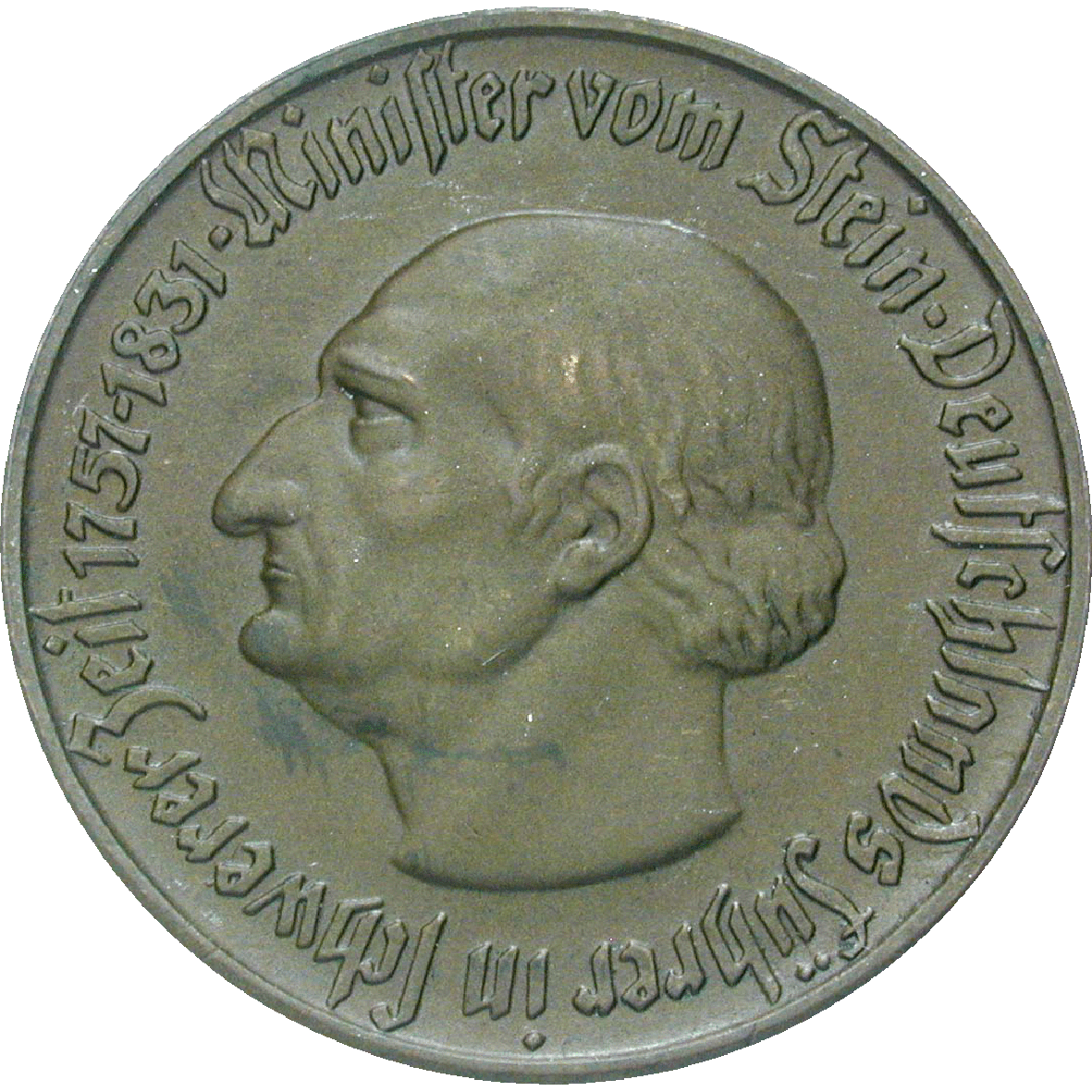Üblicherweise gehört das Münzrecht zum staatlichen Hoheitsrecht. Das bedeutet, dass der Staat für mehr oder minder geordnete Zahlungsverhältnisse zu sorgen hat. Während dem Ersten Weltkrieg war Deutschland dazu nicht mehr in der Lage. Deshalb gaben verschiedene Städte und Gemeinden während und nach dem Krieg eigene Münzen und Geldscheine aus. Der Staat duldete die Notgeldausgaben zwangsläufig, denn er konnte den Münzmangel selber nicht beheben. Die Provinz Westfalen liess noch 1921 besonders schöne Notmünzen prägen. Das Münzmaterial ist Tombak, eine Legierung von goldähnlicher Farbe. Abgebildet ist Heinrich Friedrich Karl vom und zum Stein, der als Politiker und Reformer bekannt wurde und im Westfalischen Cappenberg seinen Lebensabend verbrachte.

